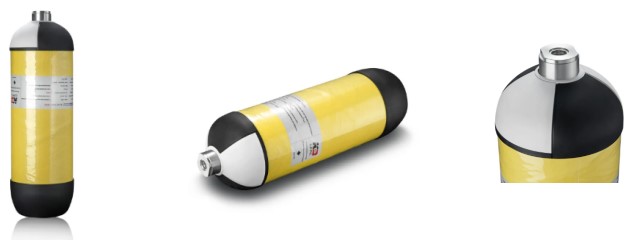High-pressure cylinders, such as those made from carbon fiber composites, are critical components in a variety of applications ranging from emergency rescue operations and firefighting to recreational scuba diving and industrial gas storage. Ensuring their reliability and safety is paramount, which necessitates regular maintenance and testing. This article delves into the physical aspects of cylinder maintenance, the frequency of required tests, and the regulatory landscape across different regions.
Understanding Cylinder Testing
Cylinder testing encompasses a range of inspections and procedures designed to verify the structural integrity, safety, and operational efficiency of high-pressure containers. The two primary types of tests are hydrostatic testing and visual inspections.
Hydrostatic Testing involves filling the cylinder with water, pressurizing it to a level higher than its operating pressure, and measuring its expansion. This test helps identify weaknesses in the cylinder’s structure, such as cracks, corrosion, or other forms of degradation that could lead to failure under pressure.
Visual Inspections are performed to detect external and internal surface damage, corrosion, and other conditions that might compromise the cylinder’s integrity. These inspections often utilize specialized tools and techniques, such as borescopes, to examine the interior surfaces of the cylinder.
Test Frequency and Regulatory Standards
The frequency of testing and the specific requirements can vary significantly depending on the country and the type of cylinder. However, a general guideline is to conduct hydrostatic testing every five to ten years and visual inspections annually or biannually.
In the United States, the Department of Transportation (DOT) mandates hydrostatic testing for most types of high-pressure cylinders every five or ten years, depending on the cylinder’s material and design. The specific intervals and standards are outlined in the DOT regulations (e.g., 49 CFR 180.205).
In Europe, the European Union directives and standards, such as those set by the European Committee for Standardization (CEN), dictate the testing requirements. For example, the EN ISO 11623 standard specifies the periodic inspection and testing of composite gas cylinders.
Australia follows the standards set by the Australian Standards Committee, which include AS 2337 for gas cylinder test stations and AS 2030 for the general requirements of gas cylinders.
Physical Perspectives on Cylinder Maintenance
From a physical standpoint, regular maintenance and testing are essential to address the stresses and wear that cylinders endure over time. Factors such as pressure cycling, exposure to harsh environments, and physical impacts can affect the cylinder’s material properties and structural integrity.
Hydrostatic testing provides a quantitative measure of the cylinder’s elasticity and strength, revealing whether it can safely hold its rated pressure. Visual inspections complement this by identifying any surface damage or alterations in the cylinder’s physical condition that could indicate deeper issues.
Adhering to Local Regulations
It is crucial for cylinder owners and operators to be aware of and comply with the local regulations governing high-pressure cylinders in their area. These regulations not only specify the types of tests required but also outline the qualifications for testing facilities, the documentation needed, and the procedures for decommissioning cylinders that fail to meet the safety standards.
Conclusion
Maintaining high-pressure cylinders through regular testing and inspections is vital for ensuring their safety and reliability. By adhering to the recommended frequencies and standards set by regulatory bodies, cylinder users can mitigate risks and extend the lifespan of their equipment. It’s important to consult local regulations and certified testing facilities to ensure compliance and to safeguard the well-being of all cylinder users.
Post time: Feb-23-2024


